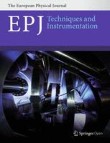Electric propulsion by various kinds of thrusters (plasma, ion,…) is a rapidly growing technology for engines of satellites and space probes for near-Earth and space exploration. In order to optimize such propulsion systems in different regimes (from a few µN to several N thrust) the availability of suitable and proper diagnostics is of fundamental importance. The diagnostics include, for example, electric, spectroscopic, calorimetric and momentum measurements during the development stage in the lab as well as during operation under space conditions.
This topical issue reviews the design and operating experience of related diagnostics and control systems from a number of different thruster concepts and missions. Topics such as hardware and software choices, links to spacecraft breadboard systems, communication and signal processing and resulting performance are covered as well.
Topics of interest include but are not limited to experimental and diagnostic aspects, measurements, methods, and fields of applications, such as:
• thrust measurements
• plasma probe diagnostics
• electric thruster optimization
• non-conventional methods
• modelling and simulation for diagnostics
The Lead guest editor
Holger Kersten, kersten@physik.uni-kiel.de
